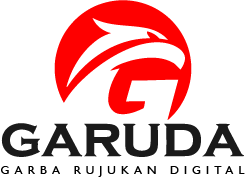Numerical Analysis of Six Degrees of Freedom Motion Response of Trimaran Semi-Submersible Ship
Abstract
Full Text:
PDFReferences
- S. Wang, F. Duan, and E. Wang, “Study on the performance and efficiency of multi-objective evolutionary algorithms for trimaran outrigger layout seakeeping optimization problem,” Ocean Eng., vol. 309, article no. 118526, 2024.
- H. Tang, D. Ren, B. Chen, and C. G. Soares, “A trimaran structure damage identification method based on machine learning,” Ocean Eng., vol. 320, article no. 120315, 2025.
- M. H. M. Ghazali, M. H. A. Satar, and W. Rahiman, “Unmanned surface vehicles: From a hull design perspective,” Ocean Eng., vol. 312, article no. 118977, 2024.
- J. Yang, Z. Deng, W. Yu, Z. Zhu, H. Li, and C. Yu, “Research methods for trimaran resistance and optimization analysis of side hull layouts,” Ocean Eng., vol. 320, article no. 120237, 2025.
- Z. Liu, H. Zhang, L. Shi, K. Shi, G. Chen, and L. Tao, “Numerical and experimental investigation of motion characteristics of a travelling trimaran encountering a freak wave,” Ocean Eng., vol. 317, article no. 120060, 2025.
- A. A. Khoob, S. M. Pour, and A. Feizi, “Experimental Investigation of a Wave-Piercing Trimaran on the Outrigger Configurations in terms of Seakeeping and Added Resistance,” J. Appl. Fluid Mech., vol. 15, no. 1, pp. 51-62, 2022.
- H. Xu, P. Neng, and F. Yang, "Motion response analysis of mining vessel based on ANSYS/AQWA," in the 3rd International Conference on Fluid Mechanics and Industrial Applications, Taiyun, China, 2019
- Z. Wu, B. Zhou, Y. Wang, J. Zou, X. Cui, and G. Zhang, “Effects of steady flow and side hull layouts on motions and added resistance of a trimaran sailing in waves,” Ocean Eng., vol. 313, article no. 119153, 2024.
- A. Bahatmaka, D. J. Kim, Samuel, A. Rio Prabowo, and M. T. Zaw, “Investigation on the performance of the traditional Indonesian fishing vessel,” MATEC Web Conf., vol. 159, pp. 1-6, 2018.
- T. L. Mai, A. K. Vo, A. Cho, V. T. Mai, and H. K. Yoon, “Experimental investigation on wave characteristics due to interference of catamaran demi-hulls in waves,” Int. J. Nav. Archit. Ocean Eng., vol. 16, article no. 100594, 2024.
- C. V. Amaechi, F. Wang, and J. Ye, “Numerical studies on CALM buoy motion responses and the effect of buoy geometry cum skirt dimensions with its hydrodynamic waves-current interactions,” Ocean Eng., vol. 244, article no. 110378, 2022.
- T. W. Piao, W. H. Wang, L. J. Wang, C. Geng, K. D. Zhang, and Y. Huang, “Analysis on slamming characteristics of new sandglass-type model in waves with consideration of motion responses,” Ocean Eng., vol. 323, article no. 120631, 2025.
- A. Bahatmaka, A. R. Prabowo, and D. J. Kim, “Effect of Nozzle Performance on the Ducted Propeller: A Benchmark-Simulation Study using OpenFOAM,” Transp. Res. Procedia, vol. 55, pp. 645-652, 2021.
- S. Y. Han, B. Bouscasse, V. Leroy, and D. Le Touzé, “Linear diffraction and radiation theory of water waves by a truncated vertical circular cylinder with heave plate in deep and shallow drafts,” Int. J. Nav. Archit. Ocean Eng., vol. 16, article no. 100580, 2024.
- S. Viswanathan, C. Holden, O. Egeland, and M. Greco, “An open-source python-based boundary-element method code for the three-dimensional, zero-froude, infinite-depth, water-wave diffraction-radiation problem,” Model. Identif. Control, vol. 42, no. 2, pp. 47-81, 2021.
- N. Dementyev, Quasi-dynamic global strength analysis of a passenger ship in regular waves, Espoo: Aalto University, 2019.
- M. A. Lutfi, A. R. Prabowo, E. M. Muslimy, T. Muttaqie, N. Muhayat, H. Diatmaja, Q. T. Do, S. J. Baek, and A. Bahatmaka, “Leisure Boat Concept Design: Study on the Influence of Hull Form and Dimension to Increase Hydrodynamic Performance,” Int. J. Mech. Eng. Robot. Res., vol. 13, no. 1, pp. 139-161, 2024.
- S. R. Samaei, F. Azarsina, and M. A. Ghahferokhi, “Numerical Simulation of Floating Pontoon Breakwater with ANSYS AQWA Software and Validation of the Results with Laboratory Data,” Bull. la Société R. des Sci. Liège, vol. 85, pp. 1487-1499, 2016.
- E. B. Djatmiko, Perilaku dan Operabilitas Bangunan Laut di Atas Gelombang Acak, Surabaya: ITS Press, 2012. (in Indonesian)
- K. Hasselmann, T. P. Barnett, E. Bouws, H. Carlson, D. E. Cartwright, K. Eake, J. A. Euring, A. Gicnapp, D. E. Hasselmann, P. Kruseman, A. Meerburg, P. Mullen, D. J. Olbers, K. Richren, W. Sell, and H. Walden, Measurements of wind-wave growth and swell decay during the joint North Sea wave project (JONSWAP), Hamburg: Deutsches Hydrographisches Institut, 1973.
- H. Veladi and N. Khodadadi, “An experimental study on assessing behavior of quay walls under the action of irregular waves using Artificial Neural Network,” in the 2nd International Congress on science & Engineering, Paris, France, 2020.
- Ansys, AQWA User Manual - Release 14.5, Pennsylvania: Ansys Inc., 2012.
- F. I. T. Petrescu, A. Apicella, A. Raffaella, R. V. Petrescu, J. K. Calautit, and A. Riccio, “Something about the mechanical moment of inertia,” Am. J. Appl. Sci., vol. 13, no. 11, pp. 1085-1090, 2016.
- A. Aqwa and H. Diffraction, Workshop 2.1 14.5, Pennsylvania: Ansys Inc., 2013.
- C. W. Chen, Y. Chen, and Q. W. Cai, “Hydrodynamic-interaction analysis of an autonomous underwater hovering vehicle and ship withwave effects,” Symmetry, vol. 11, no. 10, article no. 1213, 2019.
Refbacks
- There are currently no refbacks.








